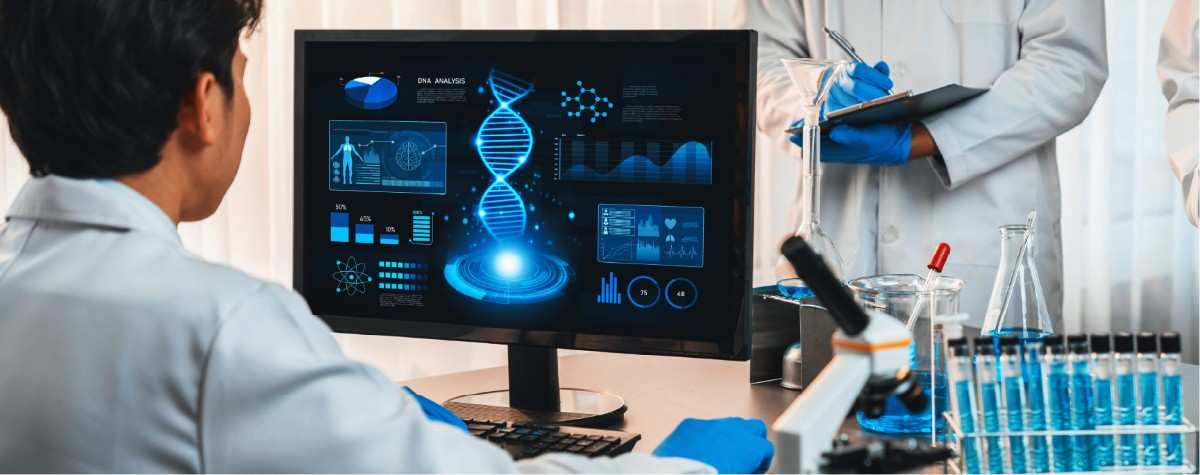


Discover the role of AI in lab diagnostics—improving accuracy, streamlining workflows, and driving smarter clinical decisions.
If there is any industry where AI has already brought a change, it is Healthcare. AI for diagnostics is no different. Laboratory medicine, the backbone of clinical decision-making, is at the cusp of radical reinvention through AI in lab diagnostics. AI for lab diagnostics can do everything, from predicting disease progression to automating routine laboratory tasks. In fact, we are only getting started. This shift is much more than just a technical improvement; it signifies a significant shift in healthcare toward a model of ongoing preventive intervention and health optimization.
Traditional laboratory medicine has served as the foundation of healthcare for decades, providing critical lab data that influences approximately 70% of all medical decisions. However, AI in lab diagnostics can successfully address the major issues facing the current system.
Laboratory professionals are grappling with increasing test volumes, staff shortages, complex workflows, and the relentless demand for faster turnaround times. Manual processes, from sample preparation to result in interpretation, create bottlenecks and can delay patient care. While human error is minimized through strict protocols, the risk remains, especially in high-volume environments.
The diagnosis of complicated results sometimes requires expertise beyond the capabilities of the laboratory professionals, and those who have the required experience may not be available, especially in smaller facilities or remote areas.
Machine learning algorithms are being used to automate clinical lab processes and analysis. The key advantage of these systems is their ability to recognize patterns in large amounts of data that would be beyond the capability of human analysts to detect consistently. Machine learning models, trained on thousands of images, can identify cellular abnormalities, bacterial colonies, or tissue structures with high accuracy.
A subset of machine learning, known as deep learning networks, is particularly adept at image analysis tasks. In pathology, these systems can look at tissue samples and find cancerous cells with accuracy rates that are often as good as or better than those of experienced pathologists. The use of AI for diagnostics can help augment human expertise, providing a second, highly accurate opinion that can identify subtle abnormalities.
Natural language processing (NLP) allows laboratories to gain useful information from previously untapped unstructured data. Patient histories, physician notes, and previous test results can be searched automatically to provide context for current diagnostic tests. It can also help labs prioritize urgent testing and predict complications before they become serious.
One of the most promising uses of AI technology is predictive analytics in labs. AI systems can identify patients who are likely to develop specific conditions before symptoms appear by analyzing clinical indicators, patient demographics, and historical data. This proactive clinical diagnostics automation approach enables earlier intervention and better patient outcomes.
Predictive analytics in labs can also streamline laboratory operations by predicting demand for tests, pinpointing equipment maintenance requirements ahead of time before actual failures occur, and better managing inventory. These functions cut waste, reduce downtime, and ensure essential tests are always available when requested.
Digital pathology is one of the most mature areas of AI lab diagnostic applications. AI systems can analyze tissue samples, identify cancerous cells, and predict treatment effectiveness based on tumor data. They are able to do so by scanning digitized slides and running pattern recognition algorithms that are trained with millions of similar images.
Systems of this nature are extremely useful in the developing world, where the pathology expertise available in local hospitals may be non-existent. AI-powered diagnostic tools can provide at least a preliminary analysis while awaiting sample transport to a center of expertise for confirmation.
